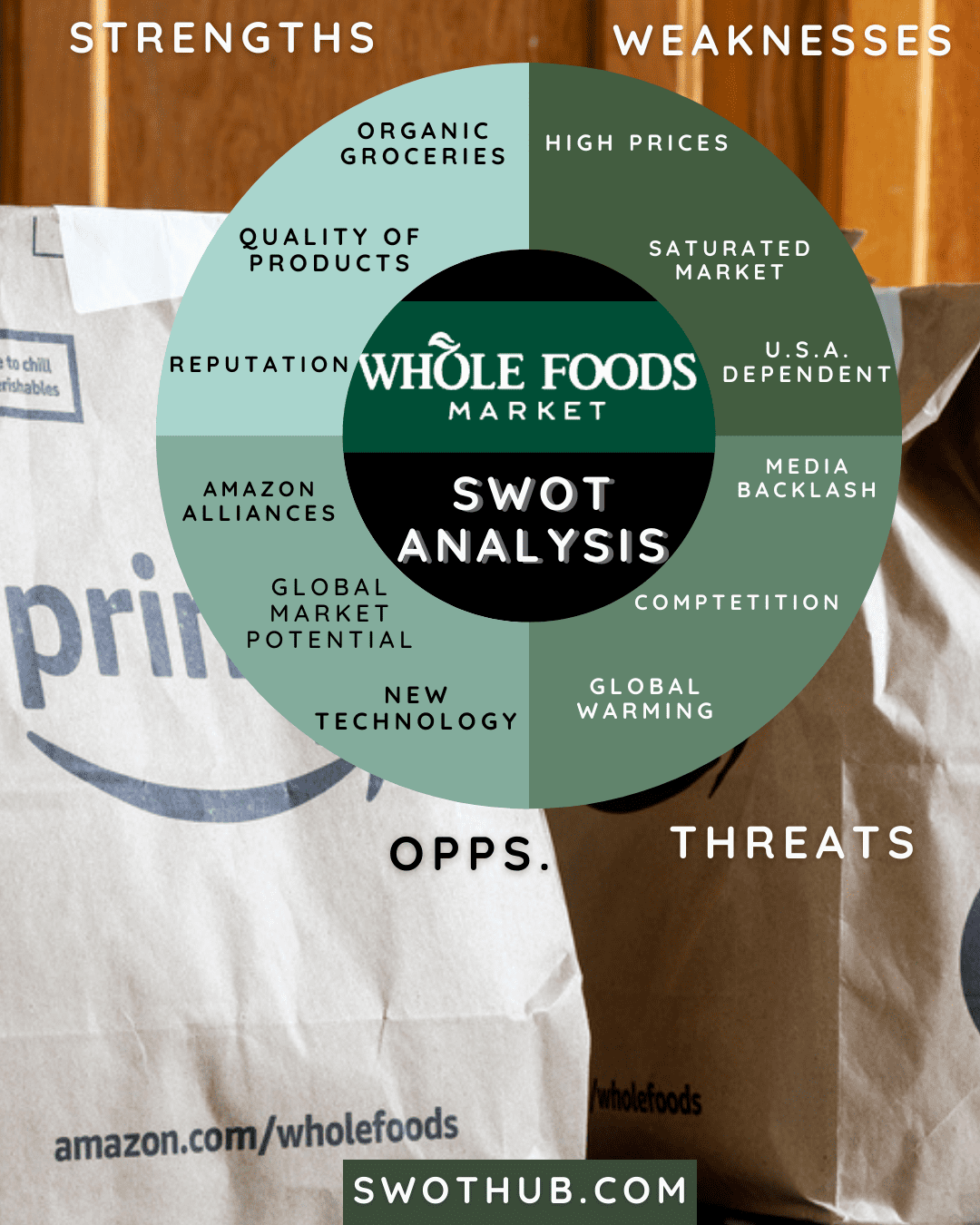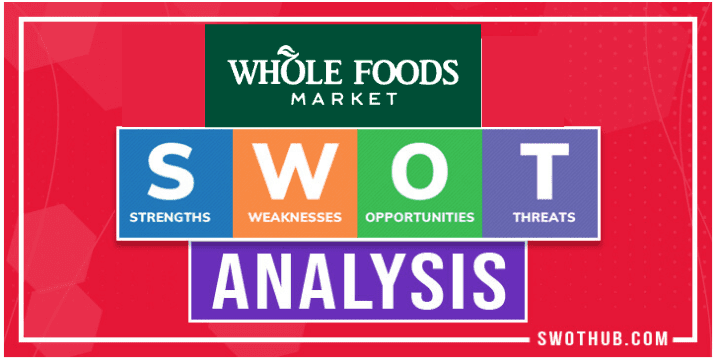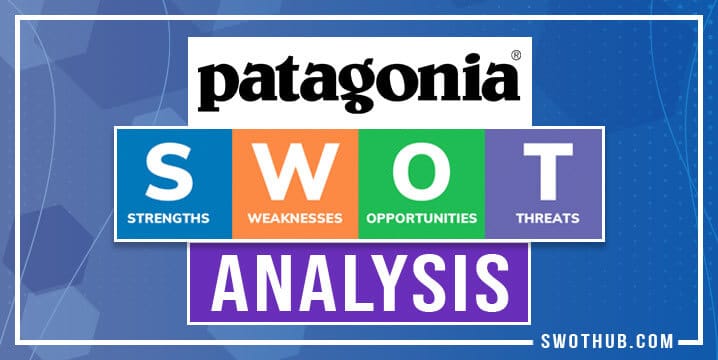Did you know the organic foods market is said to grow past $436 billion by 2026? A Whole Foods SWOT analysis of this lucrative food brand is essential. Whole Foods Market, Inc., an Amazon company, sells organic goods free of hydrogenated fats, artificial colors, flavors, and preservatives. When the owners of Clarksville Natural Grocery, Craig Weller and Mark Skiles, and John Mackey and Renee Lawson Hardy of SaferWay Food Store joined hands, their first store opened in September 1980. Whole Foods Market continues to be a popular destination for many food lovers, particularly those who choose natural and organic foods. The company offers a vast variety of food and lifestyle products. These include culinary items like chicken, beef, pork, and seafood and beverages like coffee, beer, wine, cheese, and tea.
Whole Foods SWOT Analysis
Whole Foods Market started as a chain of supermarkets and, since 2017, has been acquired by Amazon. It is one of the most popular health food retailers in America. Also, this retail business is a USDA-certified organic grocery store in the USA. Additionally, it is said that this chain was chosen organically.
Whole Foods has been able to grow internationally thanks to its effective marketing techniques. You will have a better understanding of the company and its current position in the market thanks to this Whole Foods SWOT analysis.
Amazon Whole Foods SWOT Analysis At-A-Glance
| Company Name | Whole Foods Market |
| Industry | Grocery store / Health food store |
| Founded | 1980 |
| Founders | John Mackey, Renee Hardy-Lawson, Mark Skiles, Craig Weller |
| CEO | Jason Buechel |
| Headquarter | Austin, Texas U.S |
| Annual Revenue | US$ 17 billion (2021). |
| Website | https://www.wholefoodsmarket.com/ |
How Amazon has changed Whole Foods
Table of Contents
SWOT Analysis of Whole Foods
Strengths, weaknesses, opportunities, and threats are referred to as SWOT. Strategic planning frequently uses a technique called a Whole Foods SWOT analysis, which was developed at Stanford in the 1970s. An effective approach for enhancing an organization’s strengths, fixing weaknesses, eliminating threats, and grabbing opportunities is the objective. The main objective is to identify the strategies that a business can use to capture outside opportunities, counter threats, maximize on and protect strengths, and address weaknesses.
What are the strengths of Whole Foods?
An organization’s strengths play a significant role in achieving a competitive advantage. A company’s strengths support its expansion in the market. The company’s strengths are discussed in the below swot analysis Whole Foods.
Healthy & Organic Groceries:
Whole Foods Market has invested a lot of money in store quality and customer service and has established itself as the market leader in the organic and natural food sectors. Compared to typical supermarkets, selling upmarket organic groceries offers a little more space for markups.
Top-notch Quality:
Quality is the most important consideration when marketing any good. The quality of their organic products is never compromised. Whole Foods aims to provide only the best food products in its shops. By forbidding additives like artificial flavors, colors, and other ingredients that are frequently present in the goods sold by other food retailers, Whole Foods has raised the bar.
Solid brand reputation:
Since its beginning, Whole Foods has built a strong reputation for its brand. According to the Reputation Institute’s annual study of the most trusted retail companies in 2015, it ranked 3rd. It enables Whole Foods to differentiate itself from the rest of its competitors and then leverage that success by attracting a more targeted customer base.
Dedicated employees:
To foster teamwork and increase production, Whole Foods has built a unique organizational culture. Their retail stores show off their culture, which is highly transparent. Because of this, the brand’s employees frequently exhibit high levels of motivation and dedication to their jobs.

Whole Foods Weaknesses
Weaknesses are the areas where Whole Foods Market may improve. The shortcomings that prevent a company from reaching the peak point are its weaknesses. We will examine some of the company’s shortcomings.
High Prices:
Customers generally believe that the business deliberately sells them expensive goods. The company’s most highlighted issue stems from the overpriced product price. Overcharging caused the corporation to start seeing less development in sales, which is concerning.
Saturated Market:
Market saturation is the other weakness. Market saturation caused by Whole Foods slows sales and puts pressure on prices. Whole Foods enters smaller markets with its smaller locations as it tries to saturate the market.
Dependency on the American market:
Except for a very small number of locations, most Whole Foods stores are in the American market, which means that the majority of their sales come from this one area. A firm that only sells to one market is more vulnerable to unexpected changes in the economy or other market factors, which may affect the company’s sales.
Whole Foods SWOT Analysis Opportunities:
Opportunities are chances for a business to expand. The environment around us causes these changes to happen organically. In the below section of the Whole Foods SWOT analysis, we’ll look at some of the chances for the company to expand and diversify.
Global market potential:
Whole Foods Market has the potential to expand global markets. It provides the business with space to explore international expansion and resource diversification. It already operates branches in Canada and the UK, and there is potential to invest additional money there for future growth.
Alliances with the Amazon Family:
Whole Foods has been added to Amazon’s family of companies. For the success of Whole Foods, this agreement has been quite helpful. It raised the brand’s revenue and staff engagement. Acquiring Amazon was a huge win for Whole Foods because it is a well-known brand internationally.
Adaption of new technology:
Whole Foods Market has a chance to use a differentiated pricing approach in the new market thanks to the new technologies that the company has adopted. It will allow the business to attract new customers with various value-oriented propositions while retaining its existing ones with excellent service.
Strong social media presence:
The organic food brand has a wide range of opportunities with digital media. Whole Foods can use a variety of digital marketing techniques to boost customer interaction. By doing this, they will be able to engage both new and existing customers.
Whole Foods SWOT Analysis Threats:
Threats are the factors that can have a damaging effect on an organization’s performance. Threats, however, can come from a range of sources, such as increased competition, changing governmental regulations, etc. We will discuss some of the risks that Whole Foods is currently facing.
Media backlash:
Due to how it handled consumer overcharging, which led to numerous complaints against the company, the company has experienced considerable media reactions and bad PR. A lawsuit against the business resulted in a settlement of $500K in compensation. Since then, its sales growth has slowed and it has received media backlash, so it is still considered the biggest threat for the future.
Fierce food industry competition:
Even though Amazon bought Whole Foods, the company has been struggling to compete with competitors like Walmart, which wants to overtake Amazon. Target and Walmart are giving Whole Foods a run for their money in the fierce fight.
Global warming:
Global warming may have a variety of effects on food production. The organic food items that Whole Foods sells may vary as a result. The business must be aware of these issues and prepared to address them.
Whole Foods SWOT Analysis Conclusion and Recommendations
In conclusion, Whole Foods will continue to thrive financially and retain its consumer base for many years to come. The company’s major strengths are highlighted in this Whole Foods SWOT Analysis, which includes its significant impact on the US market, its choice of organic products, and its strict quality standards. Whole Foods Market has the greatest opportunity to go global, so it must do so to promote growth and profitability. However, Whole Foods Market is helpless to stop the two principal threats that high competition and global warming bring. Every giant company has faced unfavorable press and criticism over the years, but it is now one of the key factors to take into account.
- Communication is the most crucial factor the business needs to consider. Every firm has ups and downs, but what damages businesses is a negative press connection or media backlash.
- The company ought to use a pricing strategy. Many people would purchase the product at a lower price, and the corporation may even provide special occasion discounts.
- The business ought to continue producing top-notch goods. They should regularly undergo quality inspections for this.
- The most qualified individuals should handle proper PR management. The business needs to improve its PR management before it can move further.
FAQs for Whole Foods
1. What are some weaknesses of Whole Foods?
Whole Foods faces high price perceptions, limiting its appeal to price-sensitive consumers. Its premium pricing strategy can alienate a broader market base. Additionally, dependence on suppliers for organic products presents supply chain vulnerabilities, and intense competition from traditional and online retailers adds pressure.
2. What is the competitive advantage of Whole Foods?
Whole Foods’ competitive advantage lies in its strong brand reputation for quality, organic, and natural products. Its focus on health-conscious products, sustainable practices, and a unique in-store experience differentiates it from other grocery retailers, attracting a dedicated customer base.
3. What strengths do Whole Foods have?
Whole Foods boasts a robust supply chain for organic and natural products, enhancing its product authenticity. It has a strong brand presence in the healthy and organic food segments. Innovative store layouts and customer experiences, coupled with Amazon’s technological integration, strengthen its market position.
Take a look at these other retail and food brand SWOT analyses.





